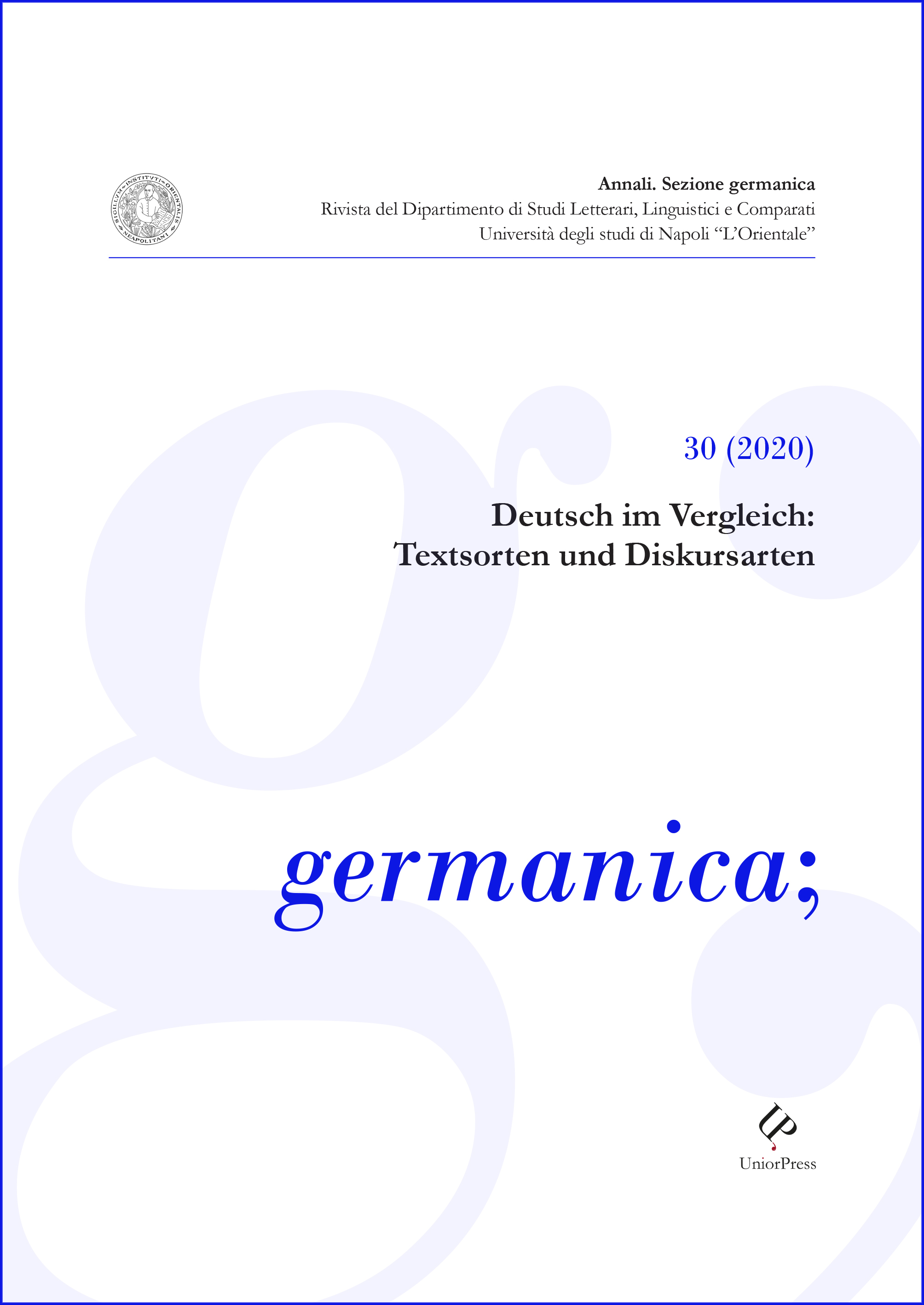Migration Discourse in German and Italian Newspapers: an Interlingual Data-driven Study
Abstract
The following study is intended as a contribution to interlingual discourse analyses. We used an ad hoc comparable corpus including press texts from newspapers representing different political orientations ("Die Zeit"; "Süddeutsche Zeitung"; "Focus"; "La Repubblica"; "La Stampa"; "Libero Quotidiano") in order to show how the discourse on migration is shaped in both countries Germany and Italy. We will focus on the recurrence of selected competing lexemes - Asylant (‘asylum seeker’), Asylbewerber (‘asylum seeker’), Asylsuchender (‘asylum seeker’), Einwanderer (‘immigrant’), Flüchtling (‘refugee’), Geflüchteter (‘refugee’), Immigrant (‘immigrant’), Migrant (‘immigrant’), Vertriebener (‘displaced person’), Zuwanderer (‘immigrant’) and immigrato (‘immigrant’), migrante, (‘immigrant‘), profugo (‘refugee’), richiedente asilo (‘asylum seeker’), rifugiato (‘refugee’) - and on their preferred combinations. Considering the fact that specific lexemes or the choice of a collocation can activate frames and different cognitive metaphors (see among others Fillmore 1982 and Lakoff/Johnson 1980), we will use this approach to shed light on the similarities and differences between the respective discourses on migration.
Gli autori che pubblicano su questa rivista accettano le seguenti condizioni:
- Gli autori mantengono i diritti sulla loro opera e cedono alla rivista il diritto di prima pubblicazione dell'opera, contemporaneamente licenziata sotto una Licenza Creative Commons che permette ad altri di condividere l'opera indicando la paternità intellettuale e la prima pubblicazione su questa rivista.
- Gli autori possono aderire ad altri accordi di licenza non esclusiva per la distribuzione della versione dell'opera pubblicata (es. depositarla in un archivio istituzionale o pubblicarla in una monografia), a patto di indicare che la prima pubblicazione è avvenuta su questa rivista.
- Gli autori possono diffondere la loro opera online (es. in repository istituzionali o nel loro sito web) prima e durante il processo di submission, poiché può portare a scambi produttivi e aumentare le citazioni dell'opera pubblicata (Vedi The Effect of Open Access).

